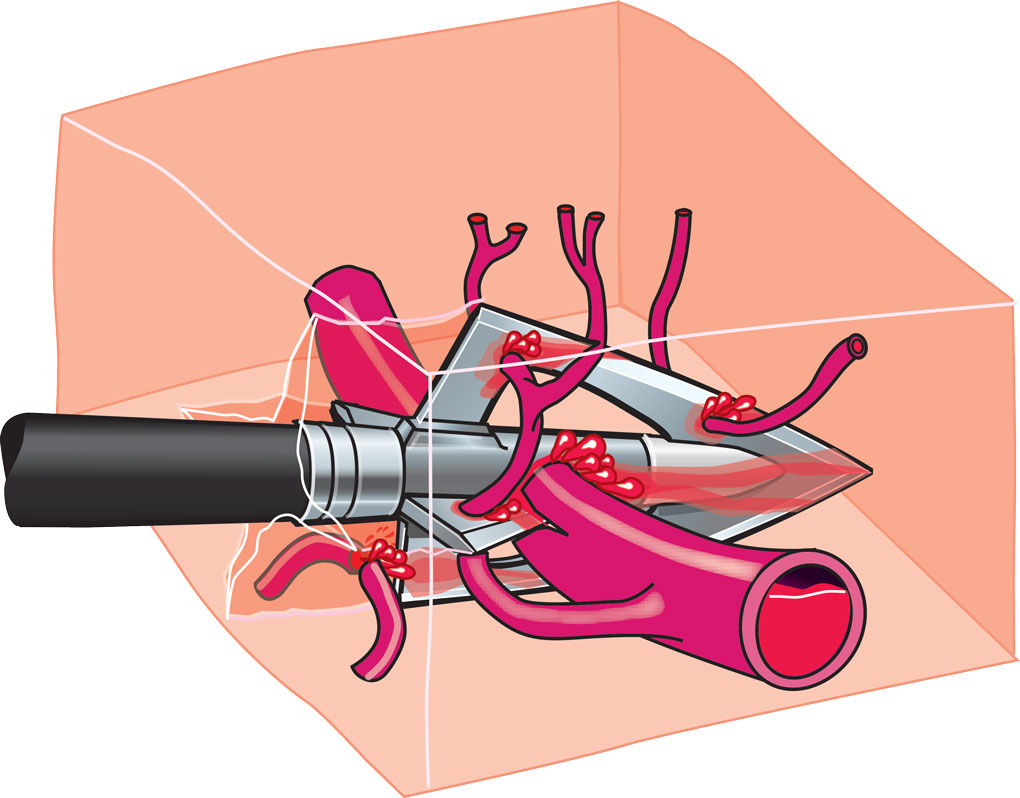How a Broadhead Causes Death

A broadhead can cause death in several different ways.
- Typically, an arrow kills by cutting blood vessels (arteries and veins), producing massive blood loss. Blood pressure drops, cutting off oxygen to the brain and causing death. This is called hemorrhagic shock.
- An animal must lose about 1⁄3 of its blood to die of hemorrhagic shock, but that can vary depending on how fast the blood is lost. There is approximately one ounce of blood per pound of body weight in the circulatory system of animals like deer.
- The time it takes for an animal to die from bleeding can vary from a matter of seconds to several hours, depending on the animal’s size, how many vessels are cut, and whether they are arteries or veins.
- Arrows also can kill by puncturing the lungs. If both lungs collapse, the flow of oxygenated blood to the brain is halted, the animal becomes unconscious within seconds, and it dies before it can bleed to death.
- Arrows can kill by disrupting the heart muscle, which instantly stops the flow of blood to the brain.
Why You Should Use Sharp Broadheads
Sharp broadheads are essential because they:
- Cut through skin, muscle, and even some bone better than dull ones, providing deeper penetration.
- Cut the tough elastic walls of blood vessels better and cause more bleeding than dull broadheads.
- Are more likely to penetrate an animal completely, which leaves both an entrance and an exit wound, making trailing and recovery easier.